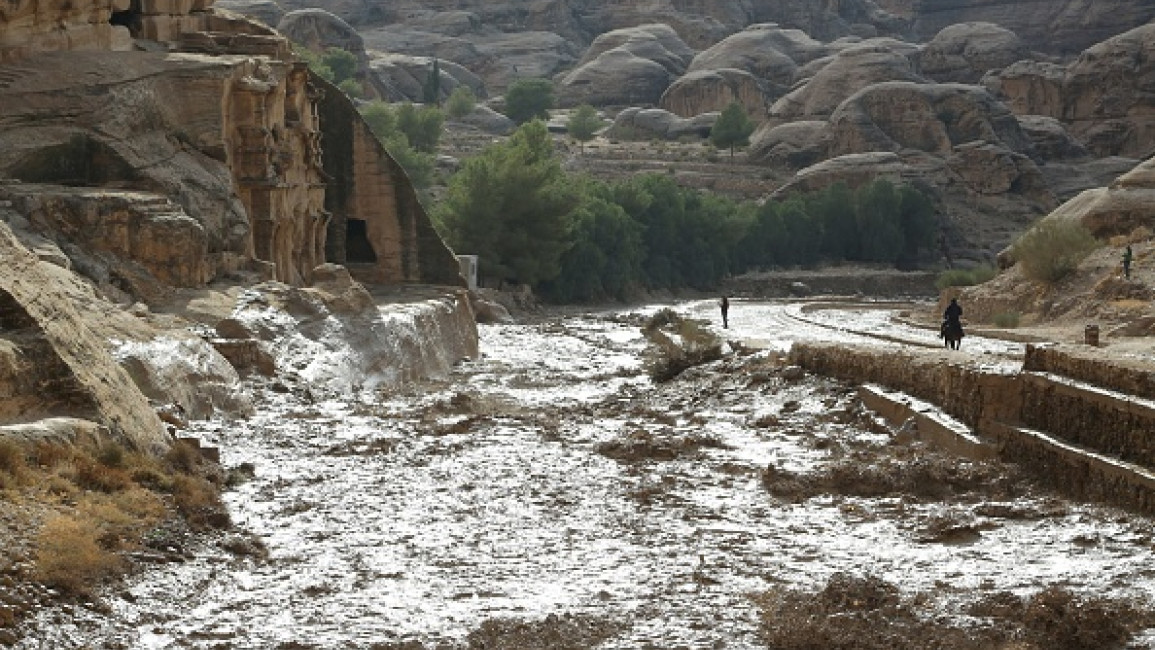Panic as flash floods in Petra threaten ancient structures
Jordan’s ancient city of Petra has been hit by flash floods over Christmas, threatening ancient structures and injuring at least three people.
Videos on social media show deluges surging down rock faces and racing through the tight passages of the UNESCO world heritage site.
#شاهد | السيول تهدد مدينة #البتراء الأثرية 🌧️🇯🇴 pic.twitter.com/K8rWJloW5v
— العربي الجديد (@alaraby_ar) December 26, 2022
Petra, built some 2,300 years ago by the Nabatean kingdom, is carved out of sandstone cliffs and ravines where water levels can rise quickly and take visitors by surprise.
Hundreds of tourists have now been evacuated and the city is currently closed in a bid to avoid a repeat of floods in 2018 where 13 people were killed.
The local governorate recorded rainfall of over 66 millimetres on Tuesday morning alone.
Floods in Petra, today, tourists were evacuated:pic.twitter.com/cAjrLNmHhy
— Taghreed Risheq (@taghreedrisheq) December 26, 2022
“The Jordanian government has evacuated some 1,700 tourists in Petra due to the heavy rains,” said the Petra Development and Tourism Region Authority.
Though flooding is not uncommon in Petra, serious landslides that may follow the heavy rain could cause a major risk to the ancient structures built into the cliff face.
Extreme weather has become more common in Jordan and across the MENA region throughout 2022, as climate change threatens heritage sites from the Arabian Sea to the Mediterranean.
UNESCO has referred to the Middle East as ‘ground zero’ for climate change.
Increased salinity, more extreme droughts and floods and rising temperatures are threatening ancient architecture across the region, according to the International Council on Monuments and Sites.
The Middle East is "warming almost two times faster than the global average, and more rapidly than other inhabited parts of the world.”

![Palestinians mourned the victims of an Israeli strike on Deir al-Balah [Getty]](/sites/default/files/styles/image_684x385/public/2024-11/GettyImages-2182362043.jpg?h=199d8c1f&itok=xSHZFbmc)


![The law could be enforced against teachers without prior notice [Getty]](/sites/default/files/styles/image_684x385/public/2178740715.jpeg?h=a5f2f23a&itok=hnqrCS4x)
 Follow the Middle East's top stories in English at The New Arab on Google News
Follow the Middle East's top stories in English at The New Arab on Google News


